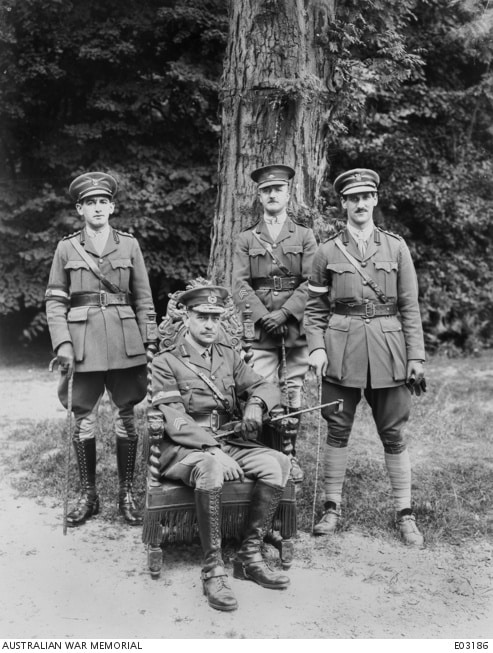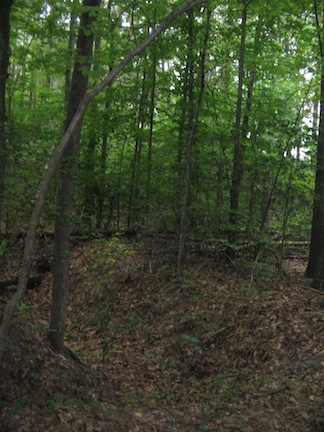Echoes of the Wilderness: Grant, Lee, and Monash’s Art of War
ECW welcomes guest author Leigh S. Goggin.
Australian World War I officer, Gen. Sir John Monash (1865-1931), is considered by many historians to be one of the finest commanders involved in that horrendous global conflict. Monash’s unique combination of strategic brilliance, innovation, meticulous planning, and humane leadership resulted in decisive Allied victories that were credited with breaking Germany’s resolve to continue fighting in the Great War.

In August 1918, Monash was knighted by King George V at the Australian Corps Headquarters in Chateau, France, for his orchestration of the Allied triumph at the battle of Hamel. This ceremony marked the first such action by a British monarch in 200 years. During the campaign to break the Hindenburg Line, the general commanded over 200,000 Allied soldiers and became the only Australian to personally command United States troops on the field of battle.[1]
Monash’s successes in World War I may be due in some respect to his close study of the 1864 Overland Campaign. When serving as a lieutenant colonel of the Victorian Branch of the Australian Intelligence Corps, Monash penned “Lessons of the Wilderness Campaign, 1864.” It was the winning entry in the inaugural Australian Army’s Gold Medal Military History Essay Competition, 1912.
In his dissertation, Monash acknowledged that “progress in the effective ranges of the rifle and field gun has brought such a revolution that the methods of 1864 as regards battle formations can afford no guide to present day practice.”[2] However, there were still important lessons to be learned. Monash gained valuable insights from examining the generalship of both Ulysses S. Grant and Robert E. Lee in the Overland Campaign. He observed:
“Grant’s general plan of campaign against Lee was based on a conception new to the war. The ulterior political objective still remained the capture of Richmond, but the immediate objective was to make Lee fight to prevent its capture by means of a continuously sustained threat of outflanking and of interposing between him and his principal base.”[3]
Grant hoped to achieve a decisive victory using this method, but unfortunately for the Army of the Potomac, the campaign was “marked by a series of brilliant successes and sustained tactical victories on the part of the Confederates,” and a definitive breakthrough could not be attained. The Federal commander therefore settled on a strategy of attrition. Monash stated that “Grant knew and respected Lee’s energy, initiative, and daring. He counted deliberately on Lee’s giving battle wherever and whenever the opportunity offered itself.”[4]
Monash concluded that “Grant’s grim purpose in this was to wear out the Confederacy’s strength by a process of ‘attrition’—an expressive term, as used by himself, and one that tersely describes the actual course of events. Although the Federal losses were by far the heavier, the resources of the North enabled Grant to make good his wastage. The Confederacy, however, was unable, through sheer depletion of its fighting strength, to replenish the ranks of Lee’s decimated brigades.”[5] The campaign was dominated by relentless frontal assaults in dense terrain, resulting in high casualties for limited tactical gain.
Monash also noted the effectiveness of hastily constructed field fortifications and the frequent inability of the armies to utilize combined arms tactics in their offensive actions. He stated: “Apart from the influence of the liberal use of log breastwork, an explanation of the universal failure of the infantry assaults is undoubtedly to be found in the lack of proper fire preparation by both infantry and artillery. The necessity for close mutual cooperation between these arms in attack and defence is here forcibly illustrated. The lack of such cooperation explains much of the indecisive fighting that occurred.”[6]

Although the attritional strategy was ultimately successful for Grant, Monash himself rejected the idea of repeatedly hurling infantry against entrenched positions. Such an approach had plagued military operations conducted early in World War I, resulting in an enormous loss of life for little reward. Instead, Monash became a pioneer of combined arms warfare, a strategy that coordinated infantry, artillery, tanks, aircraft, and supply units into a unified offensive. At a time when many generals still relied on outdated frontal assaults reminiscent of the Civil War, Monash emphasized planning and synchronization that would reduce casualties and increase the effectiveness of an assault. He declared:
“The true role of infantry was not to expend itself upon heroic physical effort, not to wither away under merciless machine-gun fire, not to impale itself on hostile bayonets, but on the contrary, to advance under the maximum possible protection of the maximum possible array of mechanical resources, in the form of guns, machine-guns, tanks, mortars and aeroplanes; to advance with as little impediment as possible; to be relieved as far as possible of the obligation to fight their way forward.”[7]
The battle of Hamel in July 1918 is a prime example of Monash’s innovative approach to warfare. He planned the operation down to the minute, incorporating tanks, aircraft, and precise artillery, achieving his objectives in just 93 minutes, an unprecedented success for the trench warfare of the time.[8] Monash’s generalship reflected a post-Civil War evolution in military thinking, emphasizing planning, integration of arms, and the preservation of life.
It can be said that Monash absorbed several key lessons from the Overland Campaign: the power of defensive entrenchments, the futility of frontal assaults, and the high cost of neglecting the coordination of infantry and artillery. As important as these insights were, the general declared that “in the view of the author, by far the most pregnant lesson of the Wilderness campaign is the vital influence on military operations of the personal qualities of the leaders.”[9] Monash greatly admired Grant’s tenacity:
“The main factor in the ultimate success of the Union cause was the steadfast determination of General Ulysses S. Grant to persevere in his plan… Grant endured in the field. He was a leader of grit and endurance… Following a succession of defeated Federal leaders such as Hooker, Pope, and McClellan, Grant inspired his own army with a capacity for sustained and concentrated effort. He held his troops inflexibly to one offensive purpose, never for a moment relinquishing the initiative… Lee was compelled more and more to act on the defensive and to abandon his favorite and often-successful expedient of a crushing counterstroke.”[10]
And as for Grant’s adversary, Monash declared: “Here Grant encountered the masterly Lee, with his rapidity of decision, his energetic execution, and his wonderful capacity for choice of ground… Admirable as was Grant’s quality of determination, what words can convey an adequate tribute to the moral qualities of Lee? In a lost cause, he preserved – in the face of a constant drain of losses, both of men and material – the solidarity, mobility, and unity of action of his ragged and ill-fed regiments. To the very last, to his soldiers ‘Marse Robert’ remained the one general who was unconquerable.”[11]
Monash held both Grant and Lee in high esteem, stating that “the Wilderness campaign is destined to figure in history more by reason of the personal qualities of the two great leaders than in any other aspect.”[12] Monash possessed an equal measure of resolve, maintaining composure and effectiveness despite the horrific conditions and attritional nature of the trench warfare in World War I. But Monash was not a general who simply endured. He refused to be shaped by the grim nature of war and instead imposed his own intelligent, humane, and forward-looking vision upon it.
Leigh S. Goggin, PhD (Psychiatry and Clinical Neuroscience) is the author of Reckless in their Statements: Challenging History’s Harshest Criticisms of Albert Sidney Johnston in the Civil War and multiple scientific articles published in leading academic journals such as Emerging Infectious Diseases, Eurosurveillance, and The American Surgeon. He has been interested in military history, particularly the American Civil War, for over thirty years.
Endnotes:
[1] Perry, Roland (2017). Monash and Chauvel: How Australia’s Two Greatest Generals Changed the Course of World History. Allen & Unwin.
[2] Monash, John (1912). “Lessons of the Wilderness Campaign, 1864.” Reprinted in the Australian Army Journal (2004), Volume II, Number 1, p. 236.
[3] Ibid, p. 229.
[4] Ibid, p. 229.
[5] Ibid, p. 229.
[6] Ibid, p. 237.
[7] Australian War Memorial (2020). 1918: Australians in France – General Sir John Monash. https://www.awm.gov.au/visit/exhibitions/1918/people/genmonash
[8] Richardson, Andrew (2011). “Hamel, 1918.” Despatches Magazine: The Newsletter of the Australian Army History Unit, Volume I, p. 37.
[9] Monash, p. 230.
[10] Ibid, p. 230-231.
[11] Ibid, p. 230, 232.
[12] Ibid, p. 232.
Very nice to see General Monash get a monograph. Australia, Canada and New Zealand too often get a passing reference. The link to our Civil War was a treat! The analysis of WWI Western Front combat is a little oversimplified, the real problem was exploitation after the initial breach given the German defenses in depth, as well as a terrain often churned beyond belief by long term bombardment. Monash and similar commanders, like Julian Byng, were satisfied with more limited results, and being prepared for the inevitable German counterattack.
A fascinating read. Monash’s comments about Grant and Lee were very perceptive. More articles like this, please.
The Battle of the Wilderness holds a special place in my learning. Years ago I participated on a panel that debated the Union’s most important victory. I choseThe Wilderness because of some of the reasons mentioned by Monash– the evolution of strategies and tactics accelerated at The Wilderness, coupled with Grant’s gritty determination to proceed south.